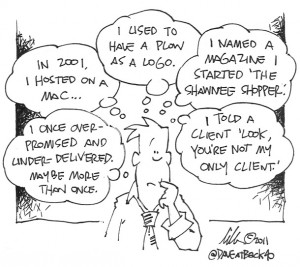Common Lead Scoring Mistakes – Part 1
 Lead scoring can be a valuable asset to your sales department. Prioritizing leads so sales agents are focused on opportunities with the highest conversion potential increases sales effectiveness. However, there are some common lead scoring mistakes that companies make when they use their lead scoring system improperly. We want to share several common mistakes that have come to our attention over the years. The first two are 1) relying solely on composite scores to determine quality leads, and 2) using a rigid scoring system.
Lead scoring can be a valuable asset to your sales department. Prioritizing leads so sales agents are focused on opportunities with the highest conversion potential increases sales effectiveness. However, there are some common lead scoring mistakes that companies make when they use their lead scoring system improperly. We want to share several common mistakes that have come to our attention over the years. The first two are 1) relying solely on composite scores to determine quality leads, and 2) using a rigid scoring system.
Relying on the Composite Score Only
Using the only composite scores is a common lead scoring mistake. Sure, the sales department should be focusing on A-list leads but there may be more to a lead’s story than what is reflected in the total score. Sales agents should be asking: what attributes scored high and which ones received a lower score? If your lead scoring model uses a scale of 0-100, for example, and a lead scoring 90 is considered hot, does this mean that all 90-score leads have equal conversion potential? No.
There may be some hot leads that rank high because of their position in the company and there are others that receive a high score because of significant marketing engagement. The key for sales agents is to examine the factors that led to the high score.
For example, consider two leads, each with scores of 80 (out of 100) that establish both as marketing-qualified leads. However, the first lead is an IT Director who has downloaded every white paper you’ve published but has no plans to buy in the next six months and has not indicated a need for your solution, and the second lead is a Purchaser who has indicated an immediate need but has limited marketing engagements. Which lead is a more sales-qualified lead?
Sales agents should look “beneath” the overall score to understand whether a lead should be contacted immediately or can be placed in a bucket to be contacted in one month.
Using a Rigid System
Everything changes. The weather, the economy, hairstyles. While there are certainly some lead scoring parameters that will remain constant in your lead scoring system, such as website visits, many factors that contribute to a lead score will likely change over time. Perhaps it is a change in the buying process for companies in the industry you serve. Or maybe a change occurs as a result of a new major competitor entering the market.
Avoid this common lead scoring mistake and create a lead scoring matrix that is flexible. There may be a need to adjust scoring weights for certain attributes or to add a new parameter. Companies that are successful at lead management use lead scoring systems that allow for adaptation. That is why Lead Liaison provides lead management products that have flexibility, and works closely with clients to ensure their lead scoring models remain effective.
However, flexibility does not simply come from an adaptable lead scoring product. Maintaining a dynamic scoring model requires sales and marketing to meet regularly in order to provide input towards updates that will align the system to current market conditions.
We will discuss more lead scoring myths in our next post. Has your company experienced a lead scoring mistake? Share your experience below!


